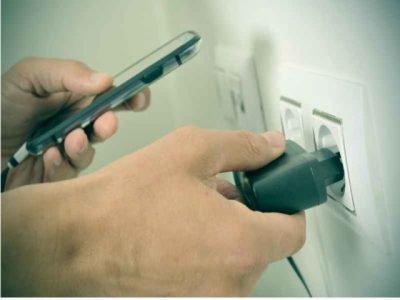Harnessing smart meter data key to better customer engagement, SECC report says
September 27, 2018
Smart meters are helping to transform the electric grid, but the enormous amounts of data generated by the technology could be better leveraged by utilities in order to provide more customized energy solutions for customers.

The Smart Energy Consumer Collaborative (SECC) asked 1,698 U.S. consumers what they want from their smart meters, and their answers detailed in a new report can help electric utilities gain insight into how best to engage their customers. The nonprofit SECC, which counts electric utilities and consumer advocacy groups among its members, works to advance smart energy technologies.
“We know there’s a lot of data being collected across the country from consumers who have AMI (Advanced Meter Infrastructure or smart meters) installed that generates a tremendous amount of data,” said Patty Durand, president & CEO at Smart Energy Consumer Collaborative. “It can even be every minute, and most utilities collect it every 15 minutes. Whereas prior to smart meters, utilities only had one data point a month on consumers, so to going from one data point a month to a 15-minute data interval is an exponential change.”
Despite the new data on customer usage, as well as added control for customers to change behavior, utilities have seen little change or engagement from their customers.
Utilities use smart meter data to provide customers with more accurate bills and more reliable forecasts. The data has also helped improve the functionality of the grid due to faster restoration of power, along with strengthened security. But utilities could do more to offer additional services to customers, Durand said.
“We have not yet seen the uplift and benefit to consumers that we would hope,” she said. While noting that there have been outage and restoration improvements as a result of smart meter data, Durand added, “There haven’t been as many opportunities for consumers to save money from all of the data that their energy usage generates. Data analytics is a very important component of this revolution.”
SECC compiled a report to focus on consumers’ needs and how utilities can meet those needs. Although the study found that many of the benefits of smart meters have yet to be realized by customers, there were also some positive findings.
The report found that the idea that customers will purchase new appliances or items to save money, termed “Replace & Save,” generated “pull” in many cases — meaning customers will research a term or idea on their own instead of having to be shown that idea, or advertised to, multiple times before adoption.
“We were delighted, I guess you could call that surprised, that we found one of our program solutions created what’s known as pull in marketing terms,” Durand said. “The way we positioned this program to consumers is that they would find out from data what they could do to actually save money on their own data.”
The other two programs that the SECC report studied were coined “Manage & Save,” which focuses on how consumers could use their appliances differently to save money; and “Shift & Save,” which looks at when consumers use energy in their home. These consumers would allow the utility to delay the start of appliances in order to save money.
More than 50 percent of consumers said they would be researching the internet about both “Replace & Save” and “Manage & Save,” and 48 percent said they would do the same about “Shift & Save.” For all three programs, consumers were most interested in learning more about potential savings, and they were most likely to seek out more information if they had taken energy efficient actions or contacted their utility in the last six months.
Durand said while it is possible for a utility to reach all of its customers and teach them, it can be expensive to connect with an entire service territory. SECC found if there is slow adoption, utilities think that means consumers don’t want or don’t care about their own energy, and “just want to pay the bill and be left alone.”
“Those conclusions are wrong,” she said, “if a scattershot approach is taken to marketing.”
“So in order to save money, in order to validate a program, and in order to delight consumers who are neglected who might not want to be neglected, the recommendation is target the ones that are already engaged …,” Durand explained.
Another barrier to smart meter adoption and having consumers take control over their own energy use is the level of difficulty into entry of the programs. If those barriers are removed, levels of adoption can increase, Durand explained. For instance, if a customer is already on the phone or on chat with a customer service representative about another matter, or if a customer is logged into their account, then customers should also be recommended offers.
Another topic the study looked at was privacy concerns over smart meters, but they found those concerns were far fewer than expected. “I think consumers would be willing to give up certain privacy issues or concerns to get the benefits they want,” Durand said.
The SECC analysis suggested four steps utilities could take to encourage smart meter adoption, including: targeting consumers who already expect and are accustomed to data sharing and analytics in other aspects of their lives; focus on “already engaged” consumers, who are likely to be interested in additional offers; start with offers consumers can easily understand and design them for ease of use; and use actionable information as an entry-level feature.
“Energy is really in an innovative place right now with digitization changing the industry and all the benefits that come with that, from electric vehicles, online access to data, and data portals and phone apps,” Durand said. “We’re really on the cusp of amazing changes in the energy space. It was slower to come than the rest of industry, but that’s because it’s regulated. But it’s here now.”
from Daily Energy Insider by Jaclyn Brandt


